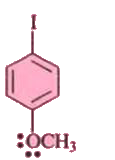which is more reactive nucleophile in polar protic solvent ?
F−
CI−
Br−
I−
The correct Answer is:4
To determine which nucleophile is more reactive in a polar protic solvent, we will analyze the behavior of halide ions (fluoride, chloride, bromide, and iodide) in such solvents.
1. Define Nucleophile: A nucleophile is a species that donates an electron pair to an electrophile. It is characterized by high electron density and the ability to form bonds with electron-deficient species.
2. Understand Polar Protic Solvents: Polar protic solvents are solvents that can donate protons (H+) and have hydrogen atoms bonded to electronegative atoms such as oxygen or nitrogen. Examples include water (H2O) and methanol (CH3OH).
3. Identify Hydrogen Bonding: In polar protic solvents, hydrogen bonding occurs between the hydrogen atom of the solvent and electronegative atoms (like halides) that have lone pairs. The extent of hydrogen bonding affects the nucleophilicity of the halide ions.
4. Evaluate Halide Ions: The halide ions in question are fluoride (F-), chloride (Cl-), bromide (Br-), and iodide (I-). Their electronegativities decrease in the order: F > Cl > Br > I.
5. Analyze Nucleophilicity in Polar Protic Solvents:
- Fluoride (F-): Being the most electronegative, fluoride forms strong hydrogen bonds with the solvent. This strong interaction makes its lone pair less available for donation to an electrophile, reducing its nucleophilicity.
- Chloride (Cl-): Chloride is less electronegative than fluoride, so it forms weaker hydrogen bonds. Its lone pair is more available than fluoride's, making it a better nucleophile than fluoride.
- Bromide (Br-): Bromide has even lower electronegativity and forms weaker hydrogen bonds than chloride, making it a better nucleophile than both fluoride and chloride.
- Iodide (I-): Iodide, being the least electronegative, forms the weakest hydrogen bonds with the solvent. Its lone pair is readily available for donation, making it the most reactive nucleophile among the halides in polar protic solvents.
6. Conclusion: The order of nucleophilicity in polar protic solvents is:
- Iodide (I-) > Bromide (Br-) > Chloride (Cl-) > Fluoride (F-)
Final Answer:
The most reactive nucleophile in polar protic solvent is iodide (I-).
---
- Fluoride (F-): Being the most electronegative, fluoride forms strong hydrogen bonds with the solvent. This strong interaction makes its lone pair less available for donation to an electrophile, reducing its nucleophilicity.
- Chloride (Cl-): Chloride is less electronegative than fluoride, so it forms weaker hydrogen bonds. Its lone pair is more available than fluoride's, making it a better nucleophile than fluoride.
- Bromide (Br-): Bromide has even lower electronegativity and forms weaker hydrogen bonds than chloride, making it a better nucleophile than both fluoride and chloride.
- Iodide (I-): Iodide, being the least electronegative, forms the weakest hydrogen bonds with the solvent. Its lone pair is readily available for donation, making it the most reactive nucleophile among the halides in polar protic solvents.
- Iodide (I-) > Bromide (Br-) > Chloride (Cl-) > Fluoride (F-)
The most reactive nucleophile in polar protic solvent is iodide (I-).
Topper's Solved these Questions
- HALOALKANES AND HALOARENES BOOK - AAKASH INSTITUTE ENGLISHCHAPTER - HALOALKANES AND HALOARENES EXERCISE - Assignment (Section - B ) ( Objective Type Question(One option is correct ))
36 Videos
- HALOALKANES AND HALOARENES BOOK - AAKASH INSTITUTE ENGLISHCHAPTER - HALOALKANES AND HALOARENES EXERCISE - Assignment (Section - C ) ( Objective Type Question(More than one options are correct ))
17 Videos
- HALOALKANES AND HALOARENES BOOK - AAKASH INSTITUTE ENGLISHCHAPTER - HALOALKANES AND HALOARENES EXERCISE - Illustration
6 Videos
- GENERAL PRINCIPLES AND PROCESSES OF ISOLATION OF ELEMENTSBOOK - AAKASH INSTITUTE ENGLISHCHAPTER - GENERAL PRINCIPLES AND PROCESSES OF ISOLATION OF ELEMENTSEXERCISE - Try Yourself
33 Videos
- HYDROCARBONSBOOK - AAKASH INSTITUTE ENGLISHCHAPTER - HYDROCARBONSEXERCISE - Assignment(Section - C) (Previous Years Questions)
60 Videos
Similar Questions
Knowledge Check
Rank the following species in order of decreasing nucleophilicity in a polar protic solvent (most → least nucleophilic):
 A3 gt 1 gt 2B2 gt 3 gt 1C1 gt 3 gt 2D2 gt1 gt 3
A3 gt 1 gt 2B2 gt 3 gt 1C1 gt 3 gt 2D2 gt1 gt 3Aliphatic nucleophilic substitution is mainly of two type SN1 and SN2.SN2 reaction proceed with strong nucleophile in polar aprotic solvent. 3∘ halides do not give SN2 reaction. Inverted products are obtained in this reaction and mechanism of reaction occurs through the formation of transition state.
SN1 reaction proceed through the formation of carbocation in polar aprotic solvent. Solvent itself acts as nucleophile in this reaction. Racemization takes place in SN1 reaction.
Which of the following compounds will give SN1 reaction?APh−CH3∣−∣ClCH2CH3BH3C−ClCH3C−CH2−BrD
Aliphatic nucleophilic substitution is mainly of two type SN1 and SN2.SN2 reaction proceed with strong nucleophile in polar aprotic solvent. 3∘ halides do not give SN2 reaction. Inverted products are obtained in this reaction and mechanism of reaction occurs through the formation of transition state.
SN1 reaction proceed through the formation of carbocation in polar aprotic solvent. Solvent itself acts as nucleophile in this reaction. Racemization takes place in SN1 reaction.
Which one of the following will give racemised product in C2H5OH ?AH3C−C∣CH3H−BrBPh−CH3∣C∣CH3−ClCPh−CH3∣C∣H−ClD
Which of the following would be the best (most reactive) nucleophile in the polar medium?
View SolutionThe most reactive nucleophile among the following is :
View SolutionAliphatic nucleophilic substitution is mainly of two type SN1 and SN2.SN2 reaction proceed with strong nucleophile in polar aprotic solvent. 3∘ halides do not give SN2 reaction. Inverted products are obtained in this reaction and mechanism of reaction occurs through the formation of transition state.
SN1 reaction proceed through the formation of carbocation in polar aprotic solvent. Solvent itself acts as nucleophile in this reaction. Racemization takes place in SN1 reaction.
Which one of the following will give SN2 reaction ?
View SolutionWhich of the following is polar aprotic solvent ?
View SolutionWhich of the following 2-halo nitrobenzene is most reactive towards nucleophilic aromatic substitution ?
View Solution
